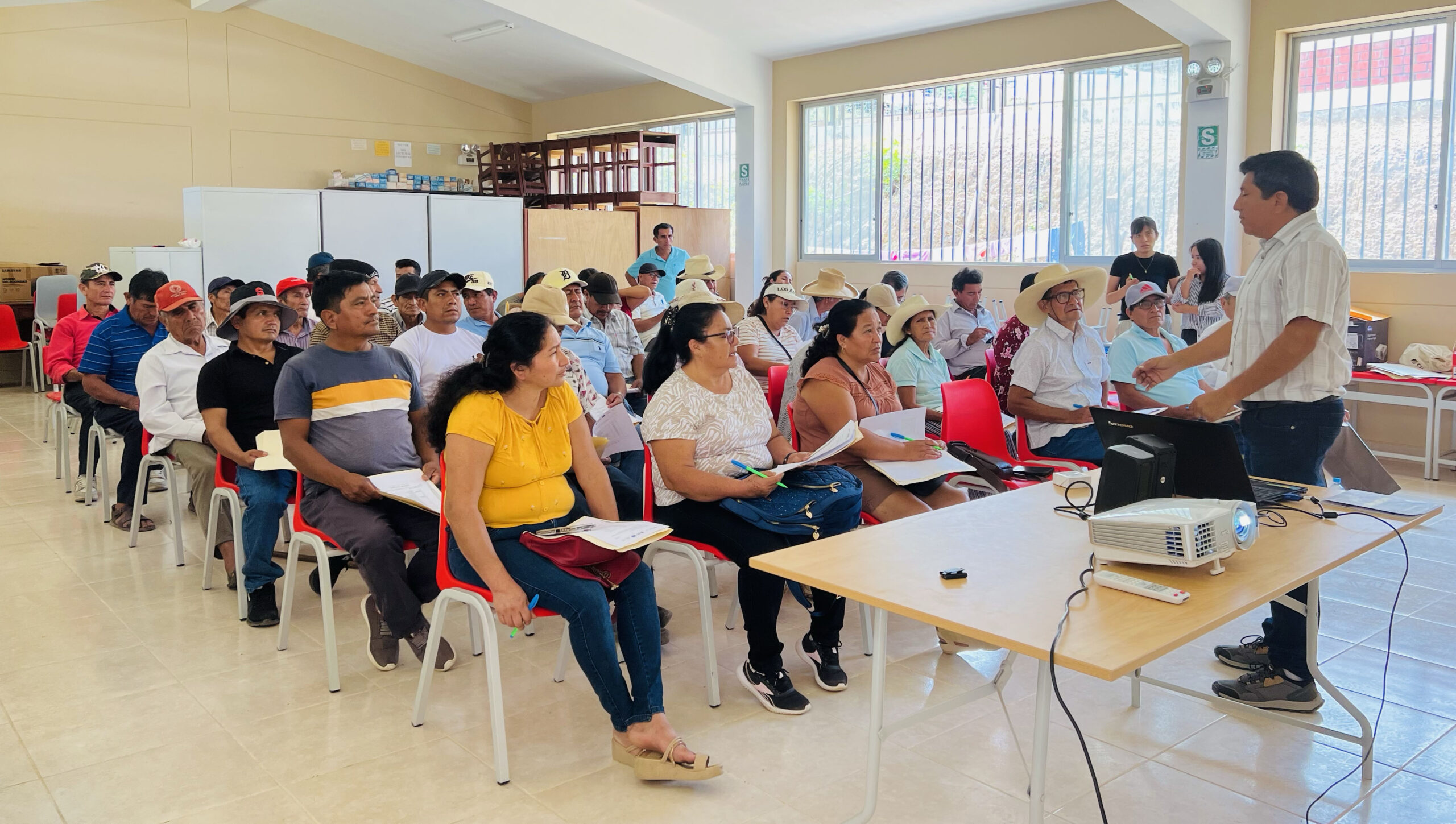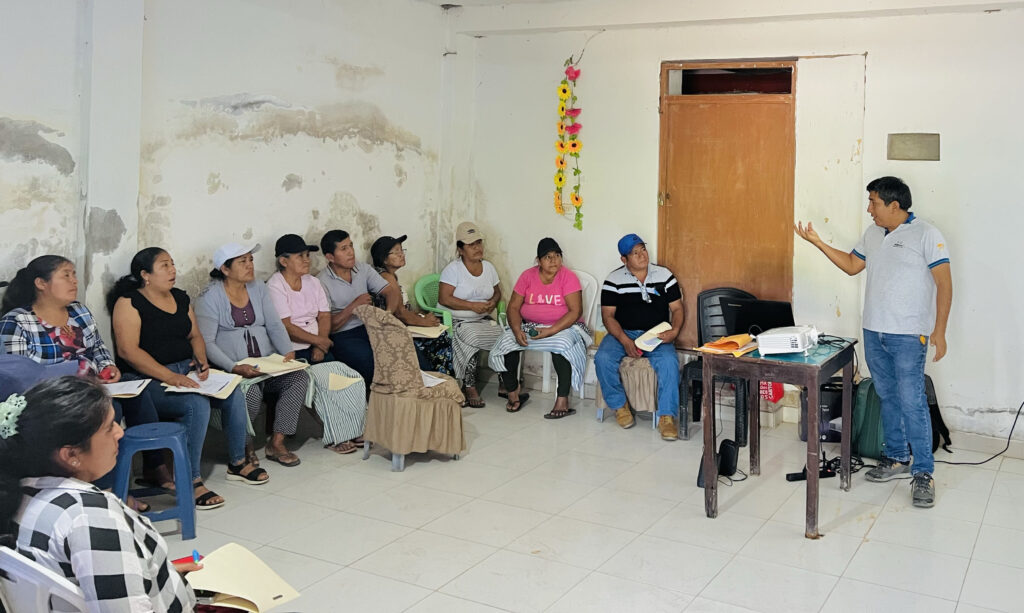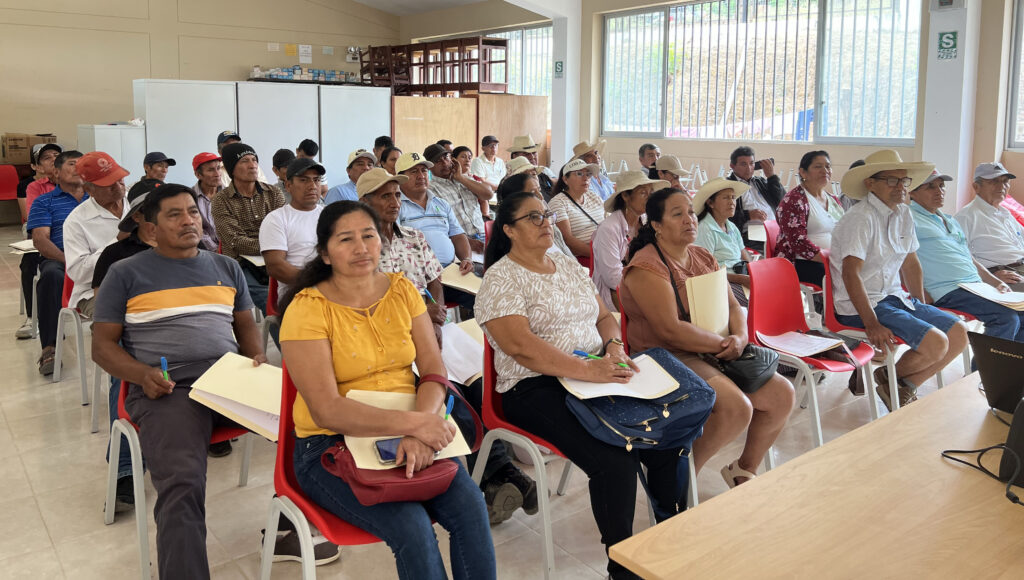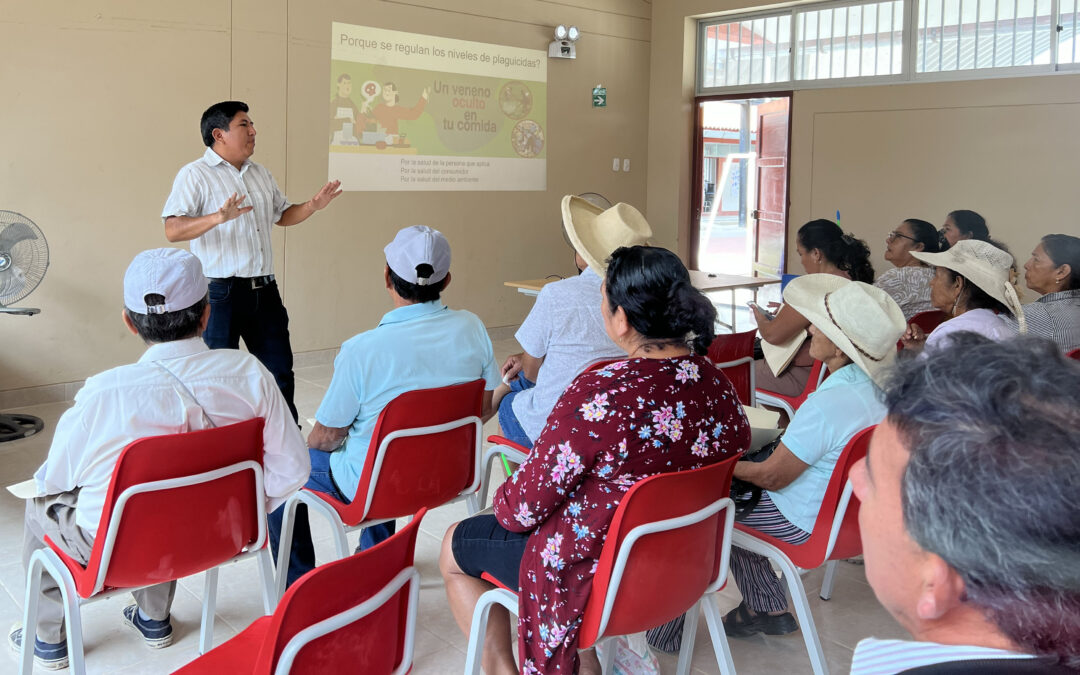In the Piura region of northern Peru, the Clima-LoCa project has developed fertilization pilots to increase productivity on more than 120 plots of land belonging to cocoa producers, using fertilization plans carefully developed according to soil analyses for each watershed and according to crop needs. After two years of work and experimentation, four workshops were organized with producers to share the main findings and results obtained in this research.

Photo: Alliance Bioversity & CIAT.
During these events, the positive results of the productivity improvement were presented. The study results show that cocoa productivity can be improved by up to 40% with fertilization plans, but compliance with other agronomic practices has a significant impact on success. Although good results are achieved in increasing productivity, a fertilization plan only makes economic sense with the new cocoa prices. In addition, the issues of cadmium, pest and disease management, and the challenges posed by climate change were presented. These areas represent significant challenges for producers in Piura.
The workshops were attended by producers from the intervention areas, such as Malingas, Platanal Bajo, Chililique, Charanal, La Quemazón, and Loma Larga. Interest in learning about the results was very high: of the 98 participants, 85% said that the plans proposed by Clima-LoCa have been effective and that they plan to continue applying them in the future.

Photo: Alliance Bioversity & CIAT.
Fredy Yovera, leader of the activity on behalf of the Bioversity Alliance and CIAT, highlighted the importance of these advances for the sustainable development of the region. In this regard, he indicated that “we have worked with low-cost fertilization plans that cover the nutritional requirements of the crop, so that producers can implement them in their cocoa plantations, always recommending that they be complemented with the various agronomic tasks that cocoa cultivation requires.”

Photo: Alliance Bioversity & CIAT.
The Clima-LoCa project will continue to promote the dissemination of results and local empowerment in Piura, with the aim of helping producers face management challenges and better understand the impact of climate change in this important cocoa-growing region.

